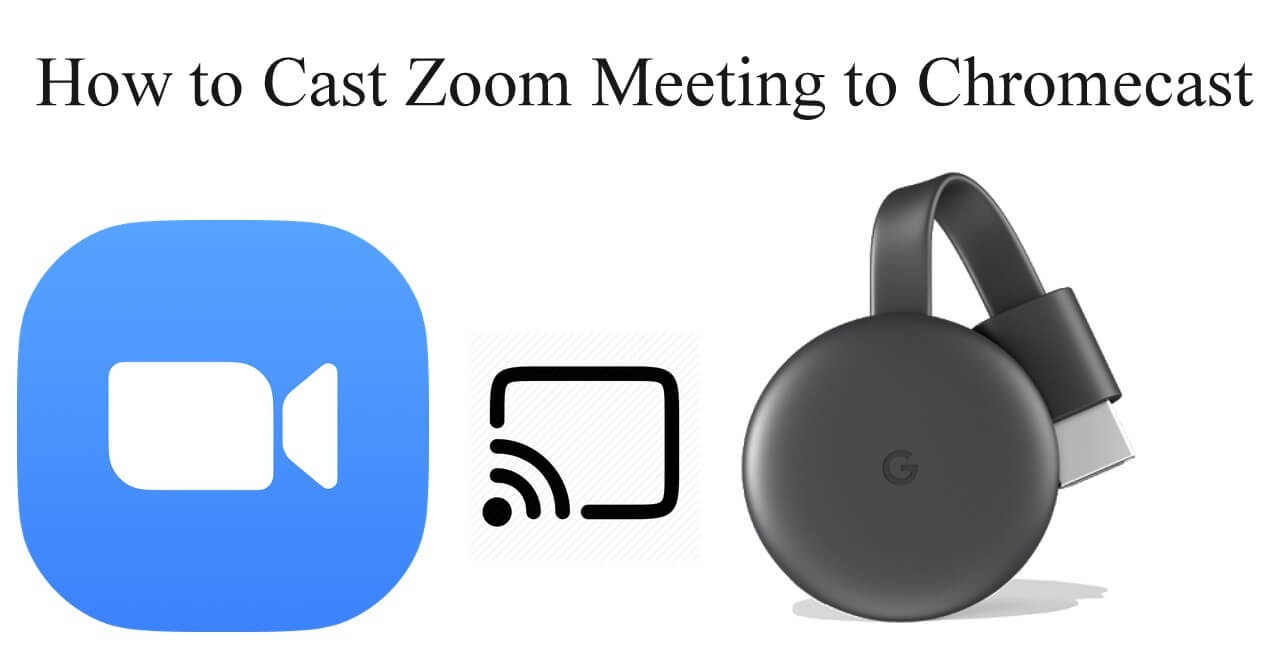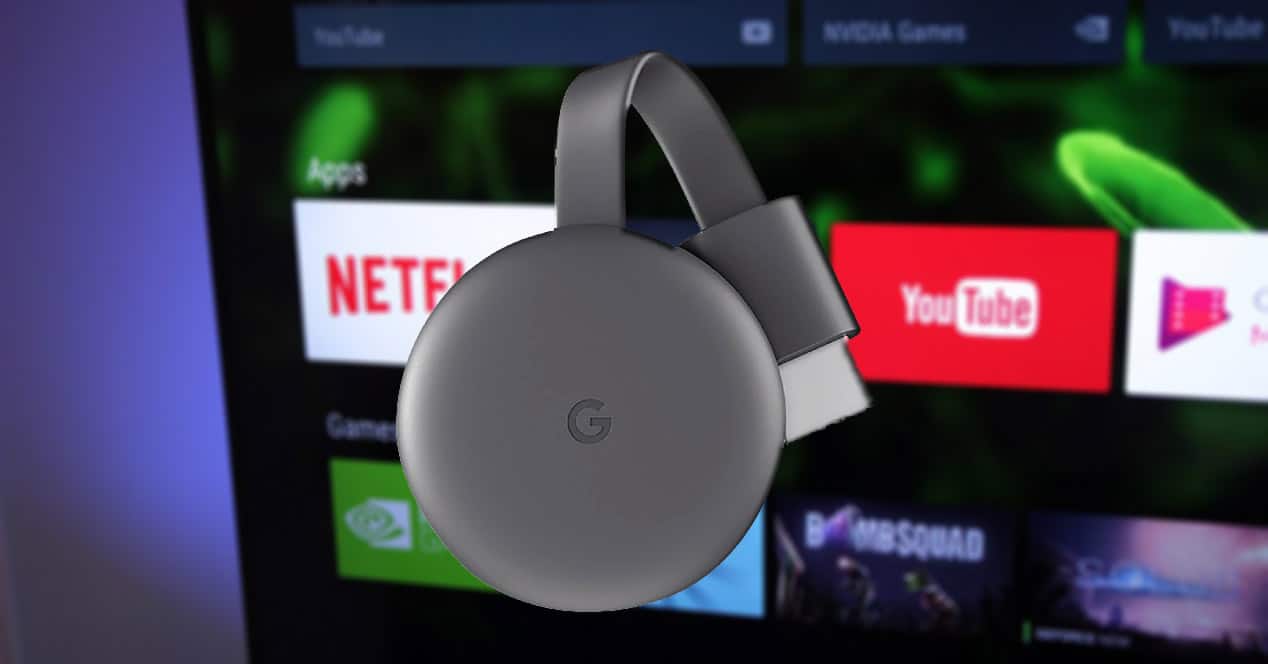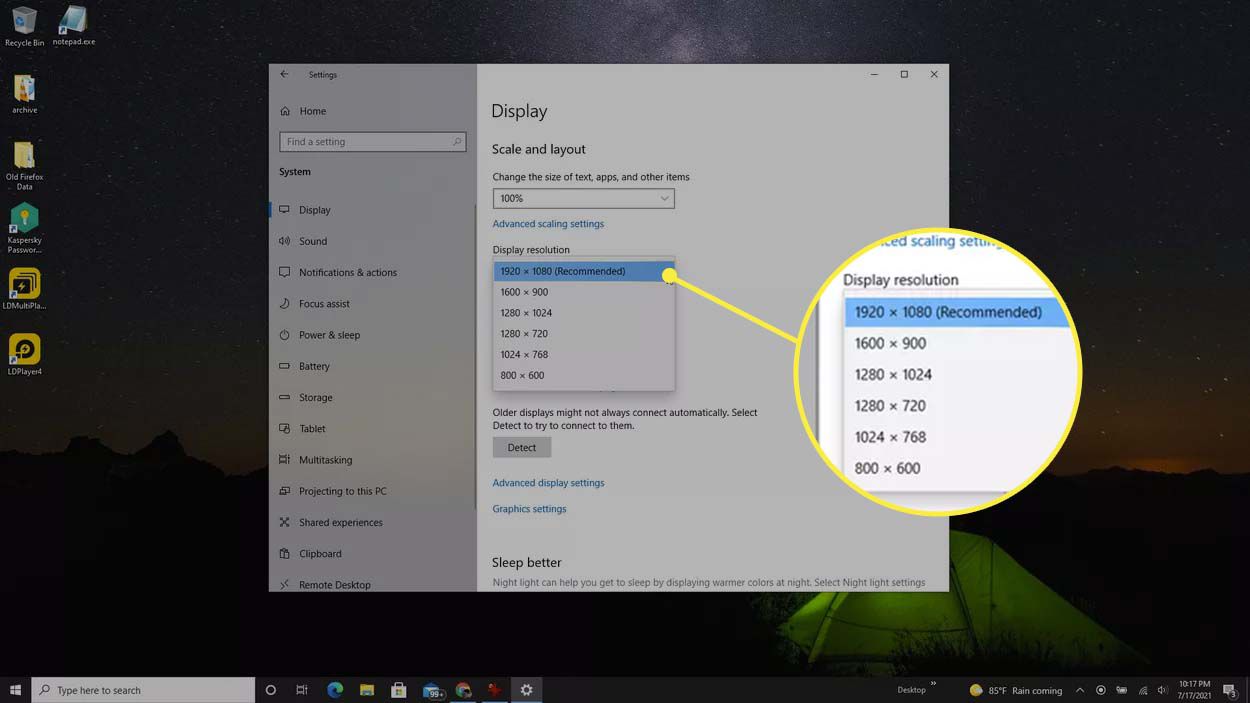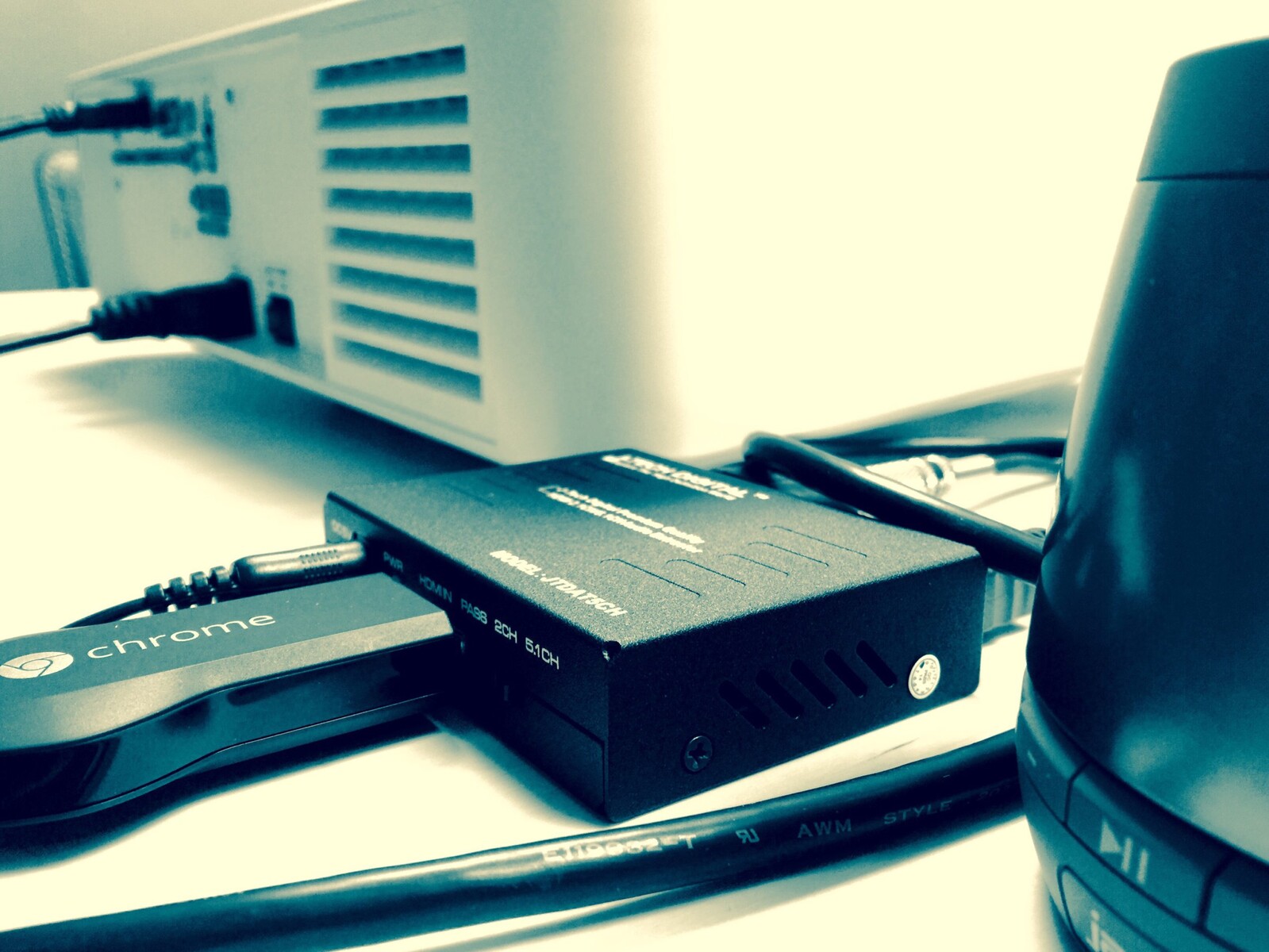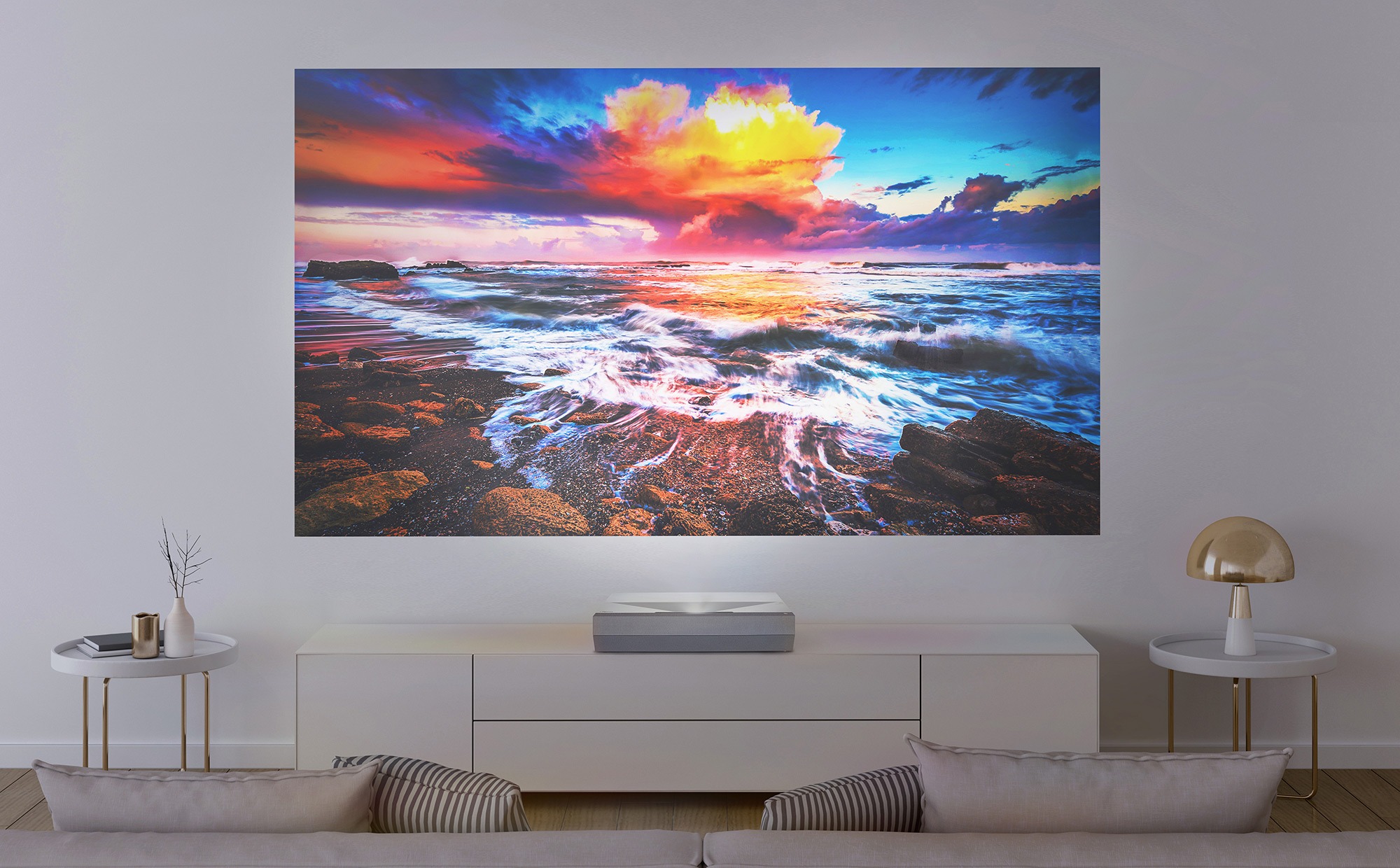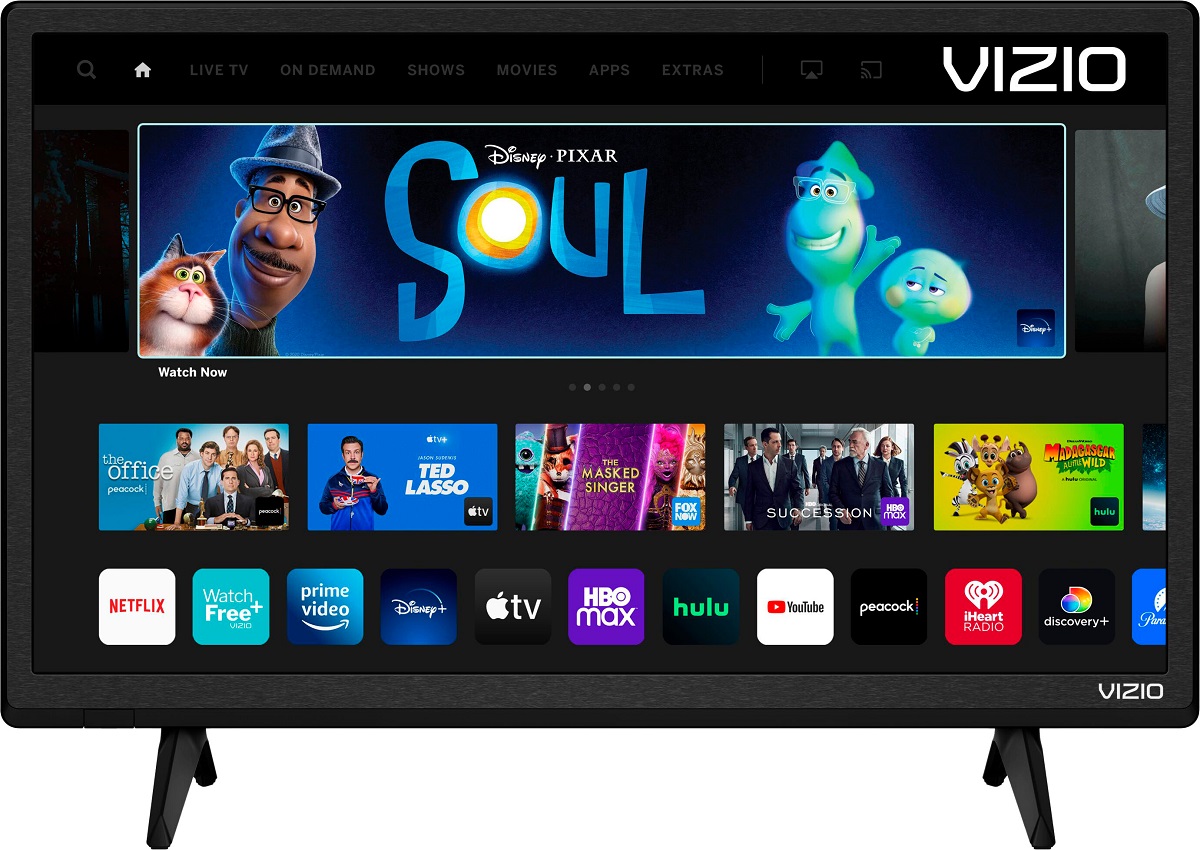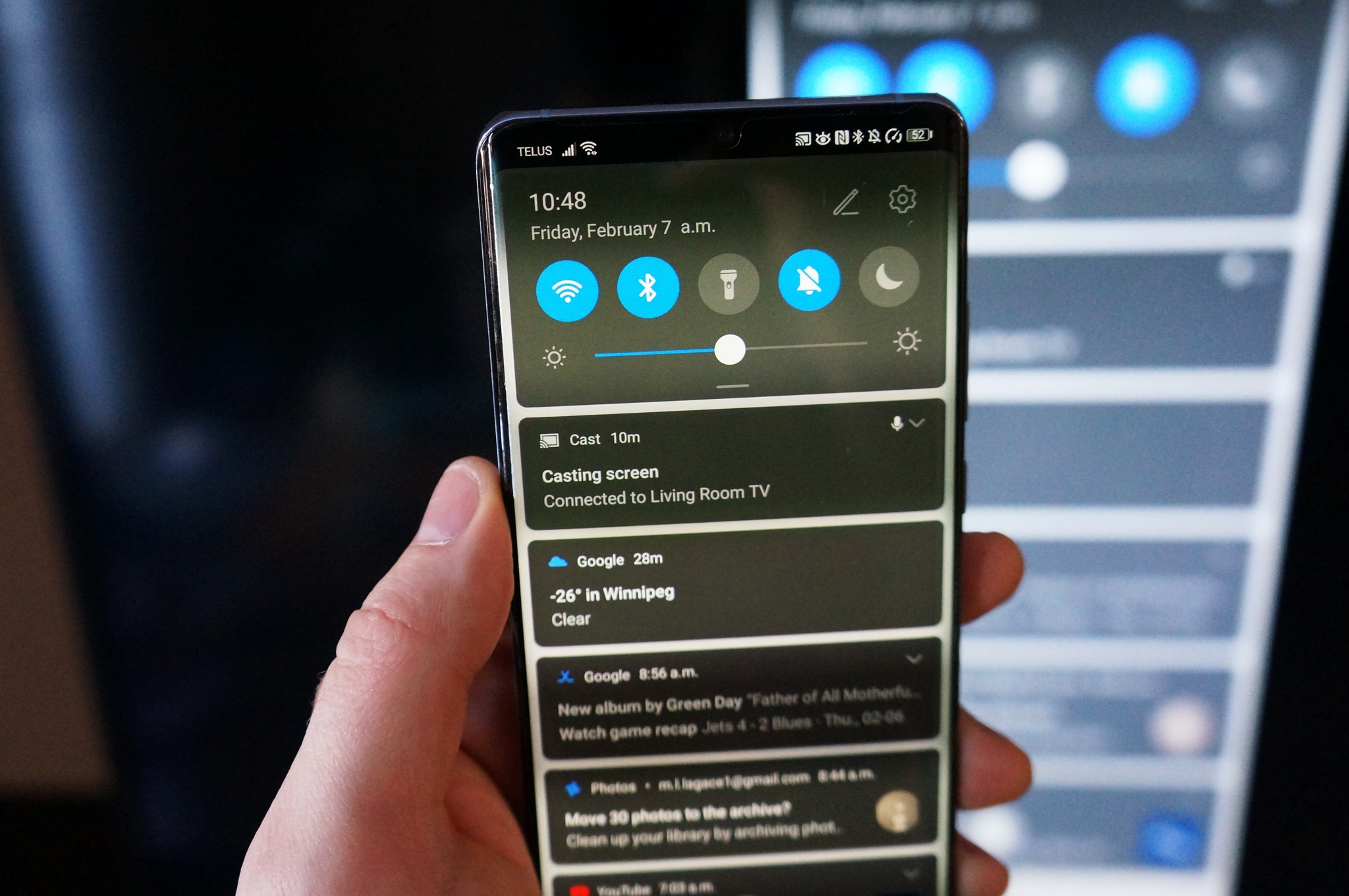Introduction
Welcome to the world of seamless video conferencing with Zoom and Chromecast! In today’s digital age, remote communication has become more important than ever. Whether you’re working remotely, attending virtual meetings, or staying connected with friends and family, video conferencing platforms like Zoom have revolutionized the way we interact online.
But why settle for a small screen when you can cast your Zoom meetings and presentations to a larger display? That’s where Chromecast comes in. Chromecast is a small, affordable device that allows you to stream content from your smartphone, tablet, or computer to your TV or any HDMI-enabled display. When combined with Zoom’s powerful video conferencing capabilities, Chromecast takes your virtual meetings to the next level, offering a more immersive and engaging experience.
In this article, we will guide you through the process of Chromecasting Zoom, enabling you to project your Zoom calls onto a larger screen for improved visibility and collaboration. Follow the steps outlined below to set up Chromecast, install the Zoom app, and mirror your Zoom meetings effortlessly. Whether you’re using an Android device, an iPhone, or a computer, we’ve got you covered.
Before we dive into the steps, it’s essential to note that Chromecast is compatible with both Zoom Meetings and Zoom Rooms. So, whether you’re hosting a team meeting, attending a webinar, or participating in a video conference, you can leverage Chromecast to enhance the viewing experience for yourself and your participants.
So, without further ado, let’s begin the journey of Chromecasting Zoom, transforming your small device screen into a big screen experience. Get ready to immerse yourself in crystal-clear visual quality, enhanced audio, and seamless video conferencing with Chromecast and Zoom!
What is Chromecast?
Chromecast is a versatile streaming device developed by Google that allows you to wirelessly stream content from your smartphone, tablet, or computer to your TV or any HDMI-enabled display. With Chromecast, you can cast a wide range of multimedia, including movies, TV shows, music, and even apps directly to your big screen.
Unlike traditional set-top boxes or streaming devices, Chromecast doesn’t have a built-in interface or a dedicated remote control. Instead, it utilizes your existing devices as the control center, making it incredibly user-friendly. All you need is a compatible smartphone, tablet, or computer running the Chromecast-enabled apps, and you’re ready to cast!
The device itself is small and discreet, resembling a USB stick with an HDMI connector on one end. Simply plug it into your TV’s HDMI port and connect the power through the USB cable or an external power adapter. Chromecast supports both the traditional Chromecast dongle as well as the Chromecast Ultra, which offers enhanced 4K and HDR streaming capabilities for those with a compatible TV.
One of the key features of Chromecast is its ability to support a wide range of streaming services and apps. Popular platforms like Netflix, YouTube, Spotify, Hulu, and of course, Zoom, offer Chromecast compatibility, allowing you to enjoy your favorite content on the big screen.
Setting up Chromecast is a breeze. All you need to do is download the Google Home app on your smartphone or tablet, follow the on-screen instructions, and connect Chromecast to your Wi-Fi network. Once set up, you can cast content simply by tapping the cast icon in supported apps and selecting your Chromecast device.
Not only does Chromecast provide an easy and convenient way to stream content, but it also offers multi-room audio capabilities. With Chromecast Audio, you can sync multiple speakers throughout your home, creating a seamless audio experience that fills every corner with your favorite tunes.
Overall, Chromecast is a powerful and affordable streaming device that brings the world of entertainment and connectivity into your living room. With its wide range of compatibility, ease of use, and the ability to cast Zoom meetings, Chromecast is truly a game-changer in the realm of digital streaming.
What is Zoom?
Zoom is a cloud-based video conferencing platform that has gained immense popularity in recent years. It allows individuals and businesses to conduct virtual meetings, webinars, and online events, effortlessly connecting people from all around the world. With its user-friendly interface, robust features, and high-quality video and audio capabilities, Zoom has become a go-to solution for remote collaboration.
Zoom offers a wide array of features designed to enhance the video conferencing experience. From virtual backgrounds and screen sharing to breakout rooms and recording options, Zoom provides a comprehensive set of tools to make meetings more engaging and productive.
One of the standout features of Zoom is its ability to accommodate large-scale meetings. Whether you’re hosting a small team meeting or a company-wide conference, Zoom can handle hundreds of participants. It also supports up to 49 video feeds on the screen simultaneously, ensuring that everyone can actively participate.
In addition to video conferencing, Zoom offers integrated audio conferencing and phone bridge services, allowing participants to join meetings via phone if they don’t have access to a computer or internet connection. This versatility makes Zoom a flexible option for individuals with different technology setups.
Zoom also enables collaboration through features like screen sharing and annotation tools. Participants can share their screens to present slides, documents, or other relevant content, making it easy to collaborate on projects and provide visual explanations. With annotation tools, users can mark up shared content, highlight important points, and engage in real-time interactive discussions.
Furthermore, Zoom’s breakout rooms feature allows meeting hosts to split participants into smaller groups for focused discussions or brainstorming sessions. This promotes collaboration among team members, even in virtual environments, fostering a sense of direct interaction and engagement.
Zoom meets various security and privacy standards, offering password protection, waiting rooms, and the ability to lock meetings to ensure that only invited participants can join. This ensures the confidentiality and integrity of your meetings, providing peace of mind for sensitive discussions.
With its intuitive interface and availability across multiple platforms, including desktop and mobile devices, Zoom makes it convenient for users to connect, collaborate, and communicate seamlessly from anywhere in the world.
Overall, Zoom has established itself as a leading video conferencing platform, facilitating communication, collaboration, and productivity in both professional and personal settings. Its feature-rich nature, reliability, and user-friendly interface have made it an indispensable tool for remote work, distance learning, and staying connected in today’s digitally interconnected world.
Why Chromecast Zoom?
Chromecast offers numerous advantages when it comes to using Zoom for your video conferencing needs. Let’s explore why Chromecast is the ideal companion for Zoom:
Enhanced Viewing Experience: Casting Zoom meetings to a larger screen with Chromecast allows for a more immersive and engaging experience. Whether you’re presenting slides, sharing documents, or participating in a video conference, seeing everything on a bigger display enhances visibility and detail, making it easier to follow along and stay engaged.
Collaboration Made Easy: By casting Zoom to a larger screen, you can make collaboration more seamless. Multiple participants in a meeting or webinar can see and contribute to shared content simultaneously, creating a collaborative environment that fosters teamwork and creativity.
Improved Audio Quality: When you cast Zoom to a TV or sound system connected to your Chromecast, you can enjoy enhanced audio quality compared to the built-in speakers on your device. This is especially beneficial in large meeting rooms or when presenting to a larger audience, ensuring that everyone can hear clearly without any distortion.
Greater Visibility for Presentations: If you’re delivering a presentation on Zoom, casting it to a bigger screen offers several advantages. Not only does it make it easier for you to navigate through slides and controls, but it also ensures that your content is easily visible to all participants. This is crucial for conveying your message effectively and maintaining audience engagement.
Flexibility and Mobility: Chromecast is a small, portable device that can be used with any HDMI-enabled display. This allows you to have your Zoom meetings or presentations in different locations, whether it’s your office, a client’s site, or even your living room. With Chromecast, you have the flexibility to transform any screen into a powerful video conferencing tool.
User-Friendly Setup: Setting up Chromecast and casting Zoom to your TV or display is remarkably simple. Once the initial setup is complete, all you need to do is tap the cast icon in the Zoom app and select your Chromecast device. It’s a hassle-free process that doesn’t require any technical expertise, allowing you to focus on your meetings rather than troubleshooting connectivity issues.
Budget-Friendly Solution: Chromecast is an affordable streaming device, making it a cost-effective option for projecting Zoom meetings to larger screens. While providing the advantages of a professional setup, Chromecast eliminates the need for expensive audiovisual equipment and complicated installations. It’s a practical solution for individuals and businesses looking to enhance their video conferencing capabilities without breaking the bank.
By harnessing the power of Chromecast and combining it with the robust features of Zoom, you can elevate your video conferencing experience to new heights. So, whether you’re hosting a team meeting, delivering a presentation, or attending a virtual seminar, don’t miss out on the benefits of Chromecasting Zoom!
Step 1: Set up Chromecast
Before you can Chromecast Zoom, you need to set up your Chromecast device. Follow these steps to get started:
- Connect Chromecast to your TV: Plug the Chromecast into an available HDMI port on your TV. Ensure that your TV is turned on and set to the correct HDMI input source.
- Power up the Chromecast: Connect the USB cable or power adapter to your Chromecast device and plug it into a power outlet. The Chromecast will power up and display the setup screen on your TV.
- Download the Google Home app: On your smartphone or tablet, download and install the Google Home app from the App Store or Google Play Store. This app will be used for the Chromecast setup process.
- Launch the Google Home app: Open the Google Home app on your device and sign in with your Google account.
- Add a new device: Tap the “+” icon on the app’s main screen to add a new device. The app will scan for any available Chromecast devices in your vicinity.
- Select your Chromecast device: Once your Chromecast device is detected, tap on it to begin the setup process.
- Confirm the code: On your TV screen, you should see a code. Make sure the code displayed on your TV matches the one shown on your device. If they match, tap “Yes” to continue.
- Choose your Wi-Fi network: Select your Wi-Fi network from the list provided and enter your Wi-Fi password if prompted. The Chromecast will then connect to your Wi-Fi network.
- Give your Chromecast a name: You can assign a name to your Chromecast device to easily identify it in the future. Choose a name or use the suggested name, then tap “Next.”
- Link your Chromecast to your Google Account (optional): You have the option to link your Chromecast to your Google Account, which allows for personalized recommendations and easy casting from devices associated with your account.
- Finish setup: Once the setup process is complete, you will see a confirmation screen. Your Chromecast is now ready to use!
Now that your Chromecast is set up and connected to your TV, you’re ready to move on to the next step: connecting Chromecast to your Wi-Fi network.
Step 2: Connect Chromecast to Wi-Fi
Once you have set up your Chromecast device, the next step is to connect it to your Wi-Fi network. Follow these simple instructions to get your Chromecast connected:
- Ensure that your Chromecast is powered on: Make sure your Chromecast is plugged into a power source and connected to your television’s HDMI port. The Chromecast setup screen should be visible on your TV.
- Launch the Google Home app: Open the Google Home app on your smartphone or tablet. Ensure that your device is connected to the same Wi-Fi network you want to use for your Chromecast.
- Tap on your Chromecast device: On the home screen of the Google Home app, you will see a list of available devices. Tap on your Chromecast device to select it.
- Tap the settings icon: In the top-right corner of the screen, you will see a gear-shaped settings icon. Tap on it to access the Chromecast settings.
- Select “Wi-Fi” settings: On the settings screen, select the “Wi-Fi” option. The app will now scan for available Wi-Fi networks.
- Select your Wi-Fi network: From the list of available Wi-Fi networks, select the network you want to connect your Chromecast to. If your Wi-Fi network is hidden, tap on “Add network” and manually enter the network details.
- Enter your Wi-Fi password: If your Wi-Fi network is password-protected, enter the password when prompted. Ensure that the password is entered correctly.
- Wait for the connection: The Google Home app will now attempt to connect your Chromecast to the selected Wi-Fi network. This process may take a few moments.
- Confirmation: Once the connection is established, you will see a confirmation message on your device’s screen, indicating that your Chromecast is now connected to Wi-Fi.
Now that your Chromecast is successfully connected to your Wi-Fi network, you’re ready to install the Zoom app and begin casting your Zoom meetings to the big screen! Stay tuned for the next step in our guide.
Step 3: Install the Zoom app
Before you can start Chromecasting Zoom meetings, you need to install the Zoom app on the device you intend to use for hosting or participating in the meetings. Follow these steps to install the Zoom app:
- Open the app store: Launch the app store on your smartphone, tablet, or computer. For Android devices, open the Google Play Store, and for iOS devices, open the App Store.
- Search for the Zoom app: In the app store’s search bar, type “Zoom” and search for the official Zoom Cloud Meetings app.
- Download and install the Zoom app: Once you locate the Zoom app in the search results, tap on it to access the app page. Then, click on the “Install” or “Get” button to download and install the app on your device. The installation process may take a few moments.
- Sign in or create a new account: After the app is successfully installed, open it and sign in using your Zoom account credentials. If you don’t already have an account, you can create one right from within the app by tapping on “Sign Up” or “Create a Free Account.”
- Grant necessary permissions (if required): Depending on your device and operating system, the Zoom app may ask for certain permissions, such as access to your camera, microphone, and contacts. Grant the necessary permissions to ensure the app functions properly.
- Explore the app: Once you have signed in to the Zoom app, take some time to familiarize yourself with the various features and settings. You can customize your profile, adjust audio and video settings, and explore additional meeting options.
- Ensure the app is up to date: It’s important to keep the Zoom app updated to access the latest features and security enhancements. Regularly check for app updates in your device’s app store and install them as necessary.
With the Zoom app successfully installed on your device, you are now ready to proceed to the next step: mirroring Zoom on your Chromecast device. Stay tuned for detailed instructions on how to cast your Zoom meetings and presentations to your big screen!
Step 4: Mirror Zoom on Chromecast
Now that you have set up Chromecast, connected it to your Wi-Fi network, and installed the Zoom app, it’s time to start mirroring your Zoom meetings on your Chromecast-enabled device. Follow the steps below to cast Zoom to your big screen:
- Ensure your Chromecast and casting device are on the same Wi-Fi network: Make sure that both your Chromecast and the device running the Zoom app are connected to the same Wi-Fi network. This is essential for them to communicate with each other.
- Launch the Zoom app: Open the Zoom app on your smartphone, tablet, or computer.
- Start or join a meeting: Either start a new meeting or join an existing one by entering the meeting ID and password provided by the host. Ensure that you have allowed the necessary permissions for audio and video access if prompted.
- Tap the “Share” or “Participants” button: Look for the “Share” or “Participants” button within the Zoom app. The location of this button may vary depending on the device and the version of the Zoom app you are using.
- Select “Cast Screen” or “Screen Mirroring”: In the list of sharing options, look for “Cast Screen” or “Screen Mirroring.” This option will initiate the process of mirroring your device’s screen to your Chromecast.
- Select your Chromecast device: The Zoom app will display a list of available casting devices. Tap on your Chromecast device to select it. This will establish a connection between your device and the Chromecast.
- Wait for the connection to be established: It may take a few moments for the connection to be established and for your device’s screen to start mirroring on your Chromecast.
- Control the Zoom meeting: Your device’s screen, including the Zoom meeting interface, will now mirror on your Chromecast. You can navigate through the meeting, present slides, share documents, or perform any other actions as needed.
- End screen mirroring: Once you are finished with the Zoom meeting, you can end the screen mirroring by either closing the Zoom app or tapping on the “Stop Casting” option within the casting controls.
By following these steps, you can easily cast your Zoom meetings and presentations to your Chromecast-enabled device, allowing for a more immersive and enjoyable video conferencing experience.
Note that different devices and versions of the Zoom app may have slightly different interfaces and options. However, the general process of casting Zoom to Chromecast remains consistent across most platforms.
Now that your Zoom meeting is mirrored on the big screen, you’re ready to start or join a Zoom meeting and take full advantage of the enhanced visibility and collaboration features that Chromecast offers. Keep reading to learn how to start or join a Zoom meeting using Chromecast!
Step 5: Start or join a Zoom meeting
Now that you have successfully mirrored your Zoom meetings on your Chromecast-enabled device, it’s time to start or join a Zoom meeting and take advantage of the enhanced visibility and collaboration features. Follow these steps to start or join a Zoom meeting using Chromecast:
- Launch the Zoom app: Open the Zoom app on your smartphone, tablet, or computer.
- Sign in to your Zoom account: If you haven’t already done so, sign in to your Zoom account using your credentials. If you don’t have an account, you can create one from within the Zoom app.
- Start a new meeting: To start a new meeting, tap on the “New Meeting” button within the Zoom app. This will create a new meeting room and generate a meeting ID.
- Join an existing meeting: If you have been provided with a meeting ID and password, tap on the “Join” button on the Zoom app’s home screen. Enter the meeting ID and password when prompted to join the meeting.
- Configure your meeting settings (optional): Once you have started or joined a meeting, you can configure various meeting settings. These settings include enabling or disabling your video and audio, adjusting your microphone and speaker volume, and enabling virtual backgrounds.
- Tap the “Share” button: When you are ready to cast your Zoom meeting to your Chromecast, tap on the “Share” button within the Zoom app. The button location may vary depending on the device and the version of the Zoom app you are using.
- Select “Cast Screen” or “Screen Mirroring”: In the list of sharing options, choose “Cast Screen” or “Screen Mirroring.” This will initiate the mirroring process and connect your device’s screen to your Chromecast.
- Select your Chromecast device: From the available casting devices, select your Chromecast device to establish a connection between your device and the Chromecast.
- Wait for the screen mirroring to start: The screen mirroring process may take a few moments to initiate. Once it’s established, your Zoom meeting interface and content will be mirrored on your Chromecast-enabled device.
- Control the meeting on your Chromecast: Your Chromecast-connected TV or display will now show your Zoom meeting. You can control the meeting from your smartphone, tablet, or computer, as all actions will be mirrored on the big screen.
- End the meeting and screen mirroring: When you’re ready to end the Zoom meeting and stop screen mirroring, you can either close the Zoom app or tap on the “Stop Casting” option within the casting controls.
By following these steps, you can easily start or join a Zoom meeting and cast it to your Chromecast-enabled device, enjoying a larger and more interactive meeting experience. Whether you are collaborating with colleagues, conducting presentations, or attending virtual events, Chromecasting Zoom meetings can enhance engagement and productivity.
Now that you have mastered the art of starting or joining a Zoom meeting using Chromecast, you’re all set to take full advantage of this powerful combination for your video conferencing needs. Stay tuned for the next step, where we will explore troubleshooting connectivity issues that may arise while Chromecasting Zoom.
Step 6: Troubleshooting Connectivity Issues
While Chromecasting Zoom meetings can greatly enhance your video conferencing experience, you may encounter connectivity issues from time to time. Here are some troubleshooting steps to help you resolve common connectivity issues:
- Check your Wi-Fi connection: Ensure that both your casting device and Chromecast are connected to the same Wi-Fi network. Inconsistent or weak Wi-Fi signals can cause disruptions in the casting process.
- Restart your devices: A simple restart of your casting device, Chromecast, and Wi-Fi router can help clear any temporary glitches that may be affecting connectivity.
- Update the Zoom app: Make sure you have the latest version of the Zoom app installed on your device. Updates often include bug fixes and improvements that can resolve connectivity issues.
- Restart the Zoom app: If you’re experiencing connectivity problems, close the Zoom app and relaunch it. This can help refresh the app and establish a new connection.
- Check the Chromecast connection: Verify that your Chromecast is properly connected to your TV’s HDMI port and is receiving power. Ensure that the HDMI input on your TV is selected correctly.
- Ensure Chromecast firmware is up to date: From the Google Home app on your casting device, navigate to the settings for your Chromecast device and check for any available firmware updates. Keeping your Chromecast firmware updated can help resolve compatibility issues.
- Reset your Chromecast: If all else fails, you can try resetting your Chromecast to its factory settings. This can be done through the Google Home app by selecting your Chromecast device, accessing the settings, and choosing the option to reset your device.
- Ensure adequate Wi-Fi bandwidth: Streaming Zoom meetings through Chromecast requires a stable internet connection with sufficient bandwidth. Other devices on your network or heavy internet usage may impact the quality of the connection. Consider prioritizing Zoom and Chromecast use or temporarily disconnecting other devices to alleviate bandwidth constraints.
- Use a wired connection (optional): For more reliable connectivity, consider using an Ethernet adapter with your Chromecast device. This allows you to connect your Chromecast directly to your router via an Ethernet cable, eliminating potential Wi-Fi interference.
- Reach out to support: If you have tried the troubleshooting steps and are still experiencing issues, don’t hesitate to reach out to Zoom support or consult the Chromecast support documentation for further assistance.
By following these troubleshooting steps, you can overcome connectivity issues and ensure smooth and uninterrupted Chromecasting of your Zoom meetings. Remember, a stable and reliable connection is crucial for a seamless video conferencing experience. Don’t let technical glitches dampen your productivity and engagement during important meetings.
Now that you’re equipped with the knowledge of troubleshooting connectivity issues, you’re prepared to take full advantage of Chromecasting Zoom for a truly immersive and seamless video conferencing experience.
Conclusion
Casting Zoom meetings to a larger screen using Chromecast opens up a world of possibilities for enhanced communication and collaboration. With the simple setup process of Chromecast, the versatility of Zoom, and the power of mirroring, you can transform your video conferencing experience into a more immersive and engaging one.
In this guide, we have covered the essential steps to successfully Chromecast Zoom:
- Setting up Chromecast and connecting it to your Wi-Fi network
- Installing the Zoom app on your device
- Mirroring Zoom on your Chromecast-enabled device
- Starting or joining a Zoom meeting
- Troubleshooting common connectivity issues
By following these steps, you can enjoy the benefits of casting Zoom meetings to a bigger screen, providing enhanced visibility, improved audio quality, and fostering better collaboration with participants.
Remember, Chromecasting Zoom is not only for professional settings. You can also use it for virtual social gatherings, educational purposes, and even for personal entertainment, such as streaming movies or watching YouTube videos on a larger display.
Keep in mind that as technology evolves, there may be updates and changes to the Chromecast and Zoom apps. It’s essential to stay up to date with the latest versions and explore new features and functionalities that may enhance your video conferencing experience even further.
With Chromecast and Zoom, the possibilities are limitless. Empower yourself with the ability to better engage with participants, collaborate more effectively, and make a lasting impression with your presentations. Start Chromecasting Zoom today and take your video conferencing to new heights!







